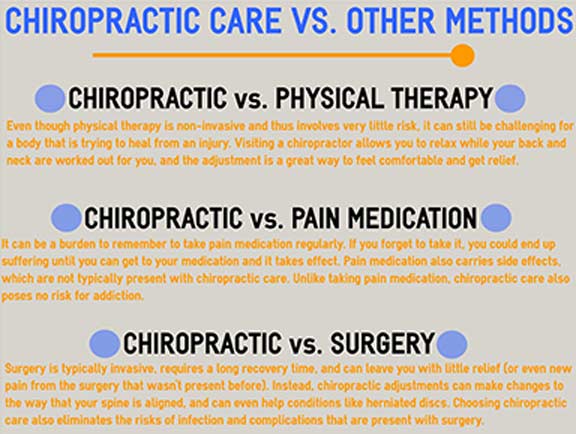Daily Practices That Lead To Pain In The Back And Techniques For Avoidance
Daily Practices That Lead To Pain In The Back And Techniques For Avoidance
Blog Article
Material Writer-Love Schaefer
Preserving appropriate position and staying clear of typical risks in daily tasks can dramatically impact your back health. From exactly how you rest at your workdesk to how you raise heavy things, small modifications can make a large distinction. Visualize a day without the nagging neck and back pain that hinders your every action; the remedy could be easier than you assume. By making a few tweaks to your day-to-day habits, you could be on your method to a pain-free presence.
Poor Posture and Sedentary Lifestyle
Poor posture and a less active lifestyle are 2 significant contributors to back pain. When apim integrative medicine slouch or suspicion over while resting or standing, you put unneeded strain on your back muscular tissues and back. This can result in muscular tissue imbalances, tension, and eventually, persistent back pain. In addition, sitting for extended periods without breaks or exercise can weaken your back muscle mass and bring about rigidity and pain.
To deal with poor pose, make a conscious effort to sit and stand up directly with your shoulders back and straightened with your ears. Remember to maintain your feet level on the ground and avoid crossing your legs for extended periods.
Including regular stretching and enhancing exercises into your everyday routine can also assist boost your pose and relieve back pain related to a less active way of living.
Incorrect Training Techniques
Improper lifting strategies can substantially add to pain in the back and injuries. When you raise heavy items, bear in mind to flex your knees and utilize your legs to raise, instead of counting on your back muscular tissues. Prevent turning your body while lifting and maintain the item close to your body to lower pressure on your back. visit my website to preserve a straight back and avoid rounding your shoulders while raising to avoid unneeded stress on your spine.
Always assess the weight of the item before lifting it. If it's too heavy, ask for assistance or use equipment like a dolly or cart to carry it securely.
Keep in mind to take breaks during lifting jobs to provide your back muscular tissues a chance to relax and protect against overexertion. By applying why does my back always hurt lifting methods, you can prevent pain in the back and reduce the threat of injuries, guaranteeing your back stays healthy and solid for the long-term.
Absence of Normal Workout and Extending
A less active way of living devoid of regular exercise and stretching can significantly contribute to back pain and discomfort. When you don't take part in physical activity, your muscular tissues end up being weak and inflexible, causing poor posture and enhanced pressure on your back. Regular exercise helps strengthen the muscles that sustain your spine, enhancing security and lowering the threat of neck and back pain. Incorporating extending into your routine can additionally enhance adaptability, stopping rigidity and pain in your back muscular tissues.
To avoid neck and back pain caused by a lack of exercise and extending, go for at the very least thirty minutes of modest physical activity most days of the week. Consist of workouts that target your core muscles, as a strong core can help alleviate stress on your back.
Furthermore, take breaks to stretch and move throughout the day, especially if you have a workdesk work. Simple stretches like touching your toes or doing shoulder rolls can assist alleviate stress and protect against pain in the back. Focusing on normal workout and extending can go a long way in preserving a healthy and balanced back and minimizing pain.
Verdict
So, remember to stay up straight, lift with your legs, and stay energetic to prevent pain in the back. By making basic changes to your everyday habits, you can avoid the discomfort and constraints that feature neck and back pain. Deal with your spine and muscles by practicing excellent pose, proper lifting strategies, and regular exercise. Your back will thanks for it!
